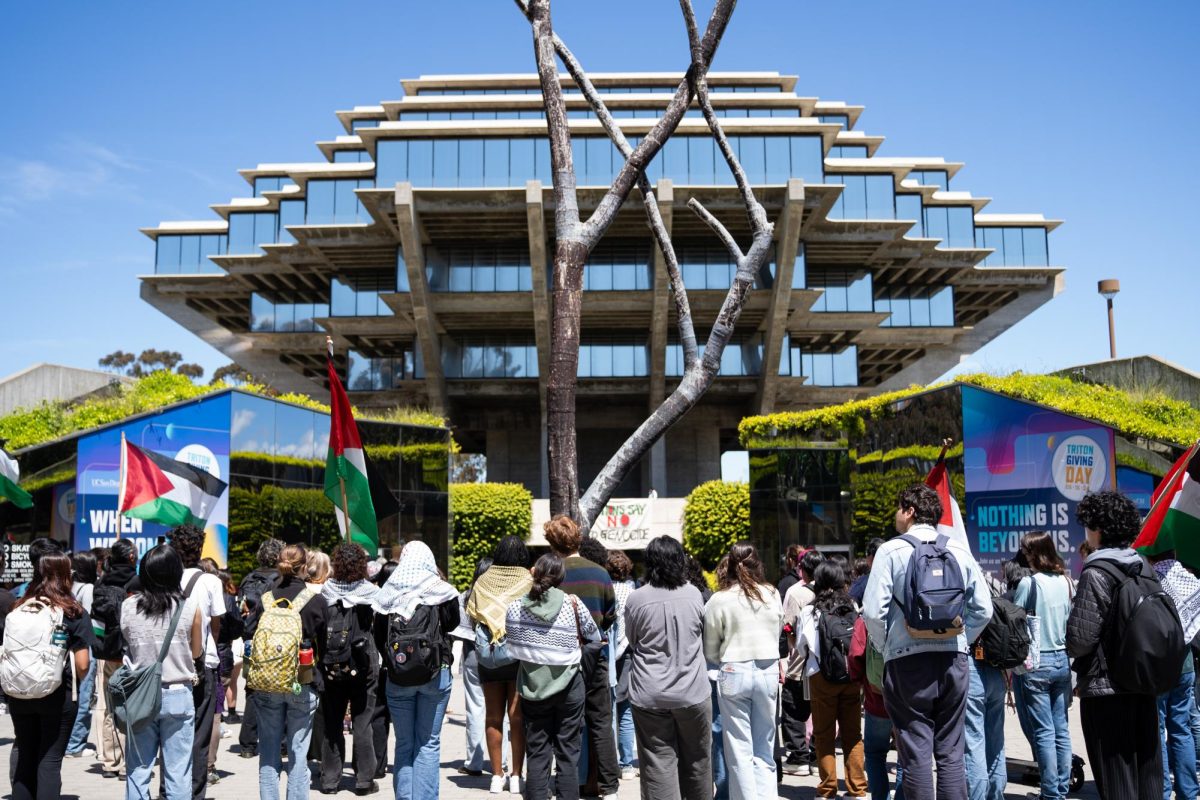Both the number of women in higher education positions and their earnings continue to lag behind men and have seen little change over the last 25 years, a new study reviewing gender inequity reported.
Released by the American Association of University Professors, the study found that while women are well represented in lower-ranked positions and less-prestigious institutions, their numbers are small in higher-ranked positions and institutions.
AAUP Director of Research John Curtis said that the figures — based on the group’s annual survey of faculty compensation, salaries, benefits and tenure status — indicate that women are still underrepresented in higher education careers.
“The usual explanation is to begin looking at individual factors,” Curtis said. “What I’m suggesting is that we need to give some consideration that it’s not just an individual situation but that there might be some systematic barriers.”
UCSD chemistry and biochemistry professor Katja Lindenberg, who co-chaired the campus’ Gender Equity Task Force in 2002, said she believes most inequities in salary and position at UCSD are generally individual cases and not systematic problems.
The campus report found that, on average, female faculty receive 5.6 percent less pay than men for a nine-month year salary, which is nonetheless better than the national average.
“On the whole, things were better at UCSD because the university has a really elaborate system that determines salaries,” Lindenberg said.
Some of the greatest disparities at UCSD exist in sciences, engineering and at UCSD School of Medicine, medicine professor Kim Barrett stated in an e-mail.
“We have to be constantly vigilant that starting salaries are comparable for comparable faculty, and also that women are considered for advancement and accelerated promotions as often as men,” Barrett stated. “We also need to change our culture that usually only considers major increases in salary or position when a faculty member is being recruited from outside the university — women are often not in a position to seek such offers.”
Barrett, who co-chaired the spring 2004 Health Sciences Gender Equity Task Force, noted that both the main campus and the medical school are monitoring apparent salary inequities and rectifying them when warranted.
In 2004, men constituted 90 percent of tenured faculty in the physical and biological sciences and at UCSD School of Medicine, and 93 percent at Jacobs School of Engineering, the 2004 task force and the Office of Academic Affirmative Action found.
Economics professor Julian Betts, also a task force committee member, describes the cause of this imbalance as a “whole pipeline.” In this “leaky pipeline,” women drop out of academic careers before becoming fully tenured professors, according to Barrett.
“At every single step of that pipeline, you see women being diverted from academic careers, especially so in science and mathematics,” Betts said.
Despite these inequities, the university has been very sensitive to the issue, Lindenberg said. Psychology professor Donald MacLeod, who served on the 2002 committee, said he saw little evidence of “gross inequities” at UCSD, but that different academic profiles for women may complicate matters.
“Men are more inclined to perhaps promote themselves, and they may tend to publish more, whereas women do a better job in teaching and service,” MacLeod said.
The AAUP report suggests that gender equity problems may not only be a question of policies but also one of “climate and culture,” and that universities should create environments that encourage women to pursue academic careers, Curtis said.
The 2003-04 study shows “little improvement in the salary gap over 25 years of higher education history.” Women earn 80 percent of what men earn across all ranks and institutions, it found. Women earn 96 percent of men’s salaries at community colleges without position rankings, 89 percent at baccalaureate institutions and 78 percent at doctoral-level institutions, suggesting a correlation between an institution’s prestige and its gender gap.
Curtis also said that women are less represented in higher-ranked, full-tenure positions because of the conflicts between the pursuit of an academic career and family commitments.
“It seems that, in an academic career, you have to be fully committed for a long period — 20 to 25 years of essentially continuous commitment to career,” Curtis said. “Women are really forced to choose between pursuing an academic career or having a family.”
Universities have been slow to address issues of work-family balance, AAUP associate secretary Julie Schmid stated in an e-mail.
“Just because we’ve provided access doesn’t mean we’ve leveled the playing field,” Schmid said. “One of the most important [changes] would be for universities to make a sustained commitment to recruiting and retaining women faculty. Part of what this requires is offering equitable, competitive salaries. It also requires providing mentoring to junior women faculty.”
Over the years, UCSD has taken several significant steps in addressing the problem of child-rearing for women faculty, according to Lindenberg, who arrived at the university in 1969.
“The university has come in an enormous way for instituting policies to make it much, much easier to raise a family,” Lindenberg said. “When I came here, for a normal pregnancy, you got two weeks [off].”
Barrett also stated that, while the campus has been “quite family-friendly,” the task force found that many faculty members are not aware of the improved child-bearing policies or worry that they will be stigmatized if they ask to take advantage of them. Childcare facilities also need to be improved and expanded, she stated.
American Council on Education Vice President Claire Van Ummersen, director of the organization’s Office of Women in Higher Education, said that the AAUP study reflects only a “snapshot” of the time, and that the number of women in higher-ranked positions is improving, particularly in the position of assistant professor.
“The pool is certainly there,” Van Ummersen said. “In 2003, for the first time, women Ph.D.s hit the 50-percent mark. What needs to happen is that the policies that are already in place be put into practice.”
Curtis said that the AAUP will be working on a more detailed analysis of gender equity in educational institutions. A UCSD School of Medicine climate survey is also being conducted, according to Barrett.
“What we’re trying to do here is stimulate fresh conversation and ask colleges and universities — and the faculty themselves — to take another look at the system,” Curtis said.







